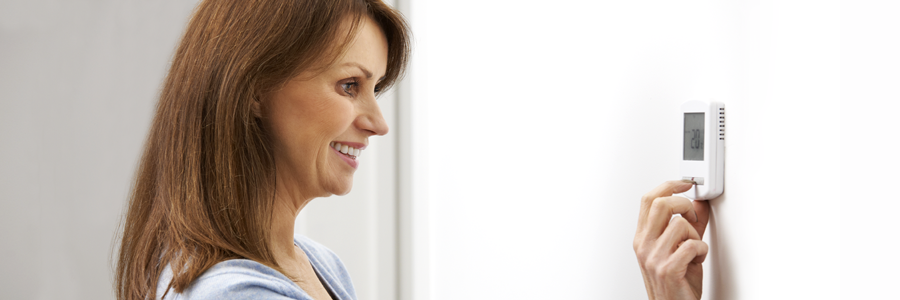How a Central Gas Heating System Works

Many people do not know how their central gas heating system works. They just expect it to keep them warm when the outdoor temperatures drop! However, if you find yourself adding layers just to stay warm inside, it may be helpful to understand your central heating system.
Bring on the BTUs!
The heat capacity of a gas furnace is measured in British Thermal Units (BTUs). A BTU equals the amount of heat required to raise the temperature of one pound of water by one degree Fahrenheit. Ironically, the BTU is rarely used in Great Britain because it is a non-metric measurement.
The higher the BTU output, the more powerful the heating system. In real world terms, the energy released by one burning match is approximately equal to one BTU.
1 So now you understand why it requires thousands of BTUs to heat a typical home.
But what is the right number of BTU's for your home?
The Goldilocks Theory
Too hot or too cold is uncomfortable! A central gas heating system should be able to provide a consistent amount of warmth to keep you comfortable inside your home. However, that means it must be sized correctly too! A “just right” size furnace can give the best balance of comfort and cost-efficiency. So it’s important that your licensed professional HVAC technician makes sure that your furnace is the right size for your space!
If your furnace is sized too small, it might not be able to keep up on colder days. And typically, you want your furnace working on cold days! Depending on the indoor vs. outdoor temperature difference, an undersized furnace may fall short! Your system may have to run continuously to try to maintain the thermostat setting. This strain can cause it to become inefficient, causing increased utility bills, and result in unnecessary wear and tear on its components.
If your furnace is too large for your house, it will heat your home very quickly and then shut off, or "short cycle." Repeatedly turning on and off can be hard on your furnace, potentially reducing its lifespan. For you, an oversized furnace can cause greater temperature fluctuations inside your home. An oversized central gas heating system can create bursts of warm air. This rush of heated air can trick thermostats into shutting off the system before the whole house is at temperature. This can leave you reaching for a sweater in between cycles!
To make sure your central gas heating system is sized properly, contact your professional licensed HVAC technician.
How a Central Gas Furnace Works
Simply put, a central gas heating system creates a cycle of warming cooler air. Here is the simple version:
- Burning propane or natural gas generates heat in the furnace's burner.
- The heat produced passes through a heat exchanger, making it hot.
- Air from the home's ductwork is blown over the heat exchanger, warming the air.
- The furnace's blower then forces the heated air into the supply ductwork, distributing it throughout the home.
Of course, many central heating system components must work together to keep you comfortable.
Temperature Control: The temperature control, which is regulated by the furnace control board, turns on the ignition switch and starts the heating process when the thermostat or control system calls for heat.
Draft Induced Fan: The draft induced fan draws air into the burner assembly. The air also allows the burners to warm the heat exchanger then is exhausted outside of the home.
Gas Burners: When the thermostat or control system calls for heat, the gas burners valves are open to deliver gas and burn fuel.
Ignition switch: Gas flows over the igniter to establish a flame. This flame is drawn through the burners and used to heat the heat exchanger.
Heat exchanger: The part of a gas furnace that adds heat to the indoor air. The gas combusts inside the heat exchanger, creating heat that is used to heat the passing air. The design of the heat exchanger can add energy efficient operation of a gas furnace.
Draft-Induced Fan: Draws air into the burner assembly. The air allows the burners to warm the heat exchanger.
Blower Fan: Uses the return venting to blow air over the hot heat exchanger. The conditioned air is then sent throughout your home via ductwork. Some furnace models offer a blower fan that can run at multiple speeds to improve efficiency.
Flue: A flue or chimney acts as an exhaust for gaseous by-products of combustion used to create heat.
Gas furnaces come in a variety of shapes to fit your space. However, they can also be categorized by one of the following:
- Non-condensing furnaces - vent exhaust gases out of the home, typically through the roof.
- Condensing furnaces - uses a second heat exchanger to heat the air from condensed exhaust gases to reach higher efficiencies.
- A modulating gas furnace - continuously regulates the amount of fuel burned to maintain the set temperature of your thermostat. This modulating component can minimize indoor temperature fluctuations.
 1 Energy Explained. (n.d.). Retrieved from U.S. Energy Information Administration: http://www.eia.gov/EnergyExplained/?page=about_btu
1 Energy Explained. (n.d.). Retrieved from U.S. Energy Information Administration: http://www.eia.gov/EnergyExplained/?page=about_btu